Caucasian Front in the First World War. Part of 2.
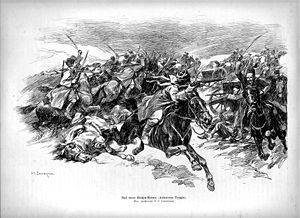 The Russian-Turkish (Caucasian) front was 720 kilometers long, stretched from the Black Sea to Lake Urmia. But one must keep in mind the most important feature of the Caucasian theater of military operations - unlike the European fronts, there was no solid line of trenches, ditches, barriers, fighting concentrated along narrow paths, often goats trails. Here was concentrated most of the armed forces of the parties.
The Russian-Turkish (Caucasian) front was 720 kilometers long, stretched from the Black Sea to Lake Urmia. But one must keep in mind the most important feature of the Caucasian theater of military operations - unlike the European fronts, there was no solid line of trenches, ditches, barriers, fighting concentrated along narrow paths, often goats trails. Here was concentrated most of the armed forces of the parties.From the first days of the war, Russia and Turkey sought to seize the strategic initiative, which could later determine the course of the war in the Caucasus. The Turkish plan of operations on the Caucasian front, developed under the leadership of the Minister of War of Turkey Enver Pasha and approved by German military experts, envisaged the invasion of Turkish troops in Transcaucasia from the flanks through the Batum district and Iranian Azerbaijan, followed by the encirclement and destruction of Russian troops. By the beginning of 1915, the Turks had been planning to seize all of the Transcaucasus and to drop the Russian troops out of the Caucasian mountain range.
Russian troops had the task of keeping the Baku-Vladikavkaz and Baku-Tiflis roads, defending the most important industrial center, Baku, and preventing the appearance of Turkish forces in the Caucasus. Since the main front for the Russian army was the Russian-German, the Caucasian army had to actively defend itself on the occupied mountain frontier. In the future, the Russian command planned the seizure of Erzerum, the most important fortress, the capture of which would have threatened Anatolia, but this required significant reserves. It was necessary to break the 3 of the Turkish army, and then take a powerful fortress and hold it when the Turkish reserve units fit. But they just were not. The Caucasian front, in the Supreme Headquarters, was considered secondary, and the main forces were concentrated against Germany and Austria-Hungary.
Although, according to common sense, it would be possible to defeat the German Empire by delivering crushing blows to the “weak links” of the Fourth Union (German, Austro-Hungarian, Ottoman empires, Bulgaria) - Austria-Hungary and the Ottomans. Germany itself, although it was a powerful fighting mechanism, but with practically no resources, to wage a long war. This was proven by A. A. Brusilov, in May-June 1916, practically crushing the Austro-Hungarian empire. If Russia were limited to active defense on the border with Germany, and the main blows would be inflicted on Austria-Hungary and the Ottoman Empire, which could not withstand numerous, brave, fairly well-prepared (at the beginning of the war when the army was personnel and with the whole guard) Russian armies. These actions triumphantly ended the war back in the 1915 year, Germany could not stand alone against the three great powers. And Russia, having received from the war important territories for its development (the Bosphorus and Dardanelles straits), a patriotic society, could have industrialized without a revolution, becoming the leader of the planet.
1914 year
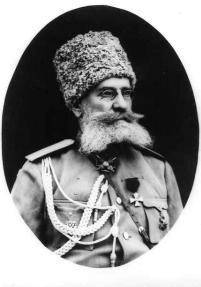 The fighting on the Caucasian front began in early November with oncoming fights in the Kepri-Kay area. Russian troops under the command of General Berhman quite easily crossed the border, and began to move in the direction of Erzerum. But the Turks soon counterattacked the forces of the 9 and 10 cases, while simultaneously pulling up the 11 case. The Keprikey operation ended with the withdrawal of the Russian units to the border, the 3 of the Turkish army became inspired and the Turkish command began to hope that they would be able to crush the Russian army.
The fighting on the Caucasian front began in early November with oncoming fights in the Kepri-Kay area. Russian troops under the command of General Berhman quite easily crossed the border, and began to move in the direction of Erzerum. But the Turks soon counterattacked the forces of the 9 and 10 cases, while simultaneously pulling up the 11 case. The Keprikey operation ended with the withdrawal of the Russian units to the border, the 3 of the Turkish army became inspired and the Turkish command began to hope that they would be able to crush the Russian army.At the same time, Turkish troops invaded Russian territory. 18 November 1914, the Russian troops left Artvin and retreated in the direction of Batum. With the assistance of the Adzharians (part of the Georgian people, who are professing Islam in large part) who rebelled against the Russian authorities, the entire Batumi region passed under the control of the Turkish troops, with the exception of the Mikhailovsky Fortress and the Upper Adjara sector of the Batumi District, as well as the city of Ardaghan Ardagan district. In the occupied territories, the Turks, with the assistance of the Adjarians, carried out massacres of the Armenian and Greek population.
Having abandoned the battle, to help the troops of Bergman, all the reserves of the Turkestan Corps, the Turks' offensive was stopped. The situation was stabilized, the Turks lost up to 15 thousand people (total losses), the Russian troops - 6 thousand.
Sarykamysh operation (9 (22) December 1914 of the year - 4 (17) January 1915 of the year)
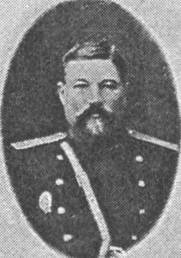 In connection with the planned offensive, there were changes in the Turkish command, doubting the success of Hasan-Izzet-Pasha, was replaced by the Minister of War Enver-Pasha, the head of his staff was Lieutenant-General von Schellendorf, the head of the operations department, Major Feldman. The plan of Enver Pasha's headquarters was that by December the Caucasian army occupied the front from the Black Sea to Lake Van over 350 km in a straight line, mainly in Turkish territory. At the same time, almost two thirds of the Russian forces were advanced, being between Sarykamysh and Kepri-Kay. The Turkish army had the opportunity to try to bypass the main Russian forces from their right flank and strike the rear, cutting the Sarykamysh-Kars railway. In general, Enver Pasha wanted to repeat the experience of the German army in defeating the 2 of the Russian army in East Prussia.
In connection with the planned offensive, there were changes in the Turkish command, doubting the success of Hasan-Izzet-Pasha, was replaced by the Minister of War Enver-Pasha, the head of his staff was Lieutenant-General von Schellendorf, the head of the operations department, Major Feldman. The plan of Enver Pasha's headquarters was that by December the Caucasian army occupied the front from the Black Sea to Lake Van over 350 km in a straight line, mainly in Turkish territory. At the same time, almost two thirds of the Russian forces were advanced, being between Sarykamysh and Kepri-Kay. The Turkish army had the opportunity to try to bypass the main Russian forces from their right flank and strike the rear, cutting the Sarykamysh-Kars railway. In general, Enver Pasha wanted to repeat the experience of the German army in defeating the 2 of the Russian army in East Prussia.The 11 Turkish Corps, the 2 Cavalry Division and the Kurdish Cavalry Corps were to be shackled from the front of the Sarykamysh detachment, while the 9 and 10 Turkish Corps 9 (22) of December began a detour through Olta (Oltu) and Bardus (Bardiz), intending to go to the rear of the Sarykamysh detachment.
But the plan had many weaknesses: Enver Pasha overestimated the combat readiness of his forces, underestimated the complexity of the mountainous terrain in winter conditions, the time factor (any delay brought the plan to nothing), there were almost no people familiar with the terrain, the impossibility of creating a well-organized rear. Therefore, terrible mistakes occurred: on December 10, two Turkish divisions (31 and 32) of the 9th corps, advancing in the Oltinsky direction, staged a battle between themselves (!). As stated in the memoirs of the commander of the 9th Turkish corps, “When the mistake was realized, people began to cry. It was a heartbreaking picture. We fought the 32nd division for four whole hours. " 24 companies fought on both sides, casualties in killed and wounded amounted to about 2 thousand people.
With a swift blow, the Turks drove the Olta detachment (head General N. M. Istomin) far inferior to them in number from Olta, but it was not destroyed. 10 (23) December The Sarikamysh detachment beat off the frontal attack of the 11 Turkish corps relatively easily. The December 11 (24) headquarters of the Sarykamysh detachment from Tiflis arrived the actual commander of the Caucasian army, General A. Z. Myshlayevsky and his chief of staff, General N. N. Yudenich. General Myshlaevsky organized the defense of Sarykamysh, but at the most crucial moment, having evaluated the situation incorrectly, he gave the order to retreat, left the army and went to Tiflis. In Tiflis, Myshlaevsky presented a report on the threat of a Turkish invasion of the Caucasus, which caused disorganization of the army’s rear (in January 1915, he was removed from command, dismissed in March of that year, replaced by General N. N. Yudenich). General Yudenich assumed the command of the 2 Turkestan Corps, and the actions of the entire Sarykamysh detachment were still led by General G. E. Berhman, commander of the 1 Caucasus Corps.
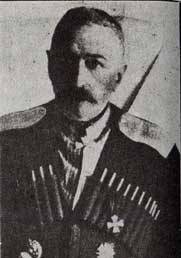 12 (25) December Turkish troops, who made a detour, took Bardus and turned on Sarıkamış. The frosty weather, however, reduced the pace of the offensive and led to significant (thousands of) non-combat losses of the Turkish forces (non-combat losses reached 80% of the personnel). The 11 Turkish Corps continued to pressure the main Russian forces, but did not do it energetically enough, which allowed the Russians to withdraw the strongest units from the front one after another and transfer them back to Sarykamysh.
12 (25) December Turkish troops, who made a detour, took Bardus and turned on Sarıkamış. The frosty weather, however, reduced the pace of the offensive and led to significant (thousands of) non-combat losses of the Turkish forces (non-combat losses reached 80% of the personnel). The 11 Turkish Corps continued to pressure the main Russian forces, but did not do it energetically enough, which allowed the Russians to withdraw the strongest units from the front one after another and transfer them back to Sarykamysh.16 (29) of December, with the reserves approach, Russian troops rejected the enemy and launched a counteroffensive. December 31 Turks received orders to withdraw. December 20 (January 2) bardus was recaptured, and December 22 (January 4) - the entire 9 Turkish corps was surrounded and captured. The remnants of the 10 corps were forced to retreat, and by January 4 — 6 (17 — 19) the situation at the front was restored. The general persecution, despite the strong fatigue of the troops, lasted until January 5 inclusive. Russian troops due to losses and fatigue, stopped the pursuit.
As a result, the Turks lost 90 000 people killed, wounded and captured (including 30 000 people frozen), 60 guns. The Russian army also suffered significant losses -20 000 killed and wounded and more 6000 frostbitten. According to General Yudenich, the operation ended with the complete defeat of the Turkish 3 Army, it almost ceased to exist, Russian troops occupied a favorable starting position for new operations; the territory of Transcaucasia was cleared of the Turks, except for a small part of the Batumi region. As a result of this battle, the Russian Caucasian Army moved military operations into Turkey and opened its way deep into Anatolia.
This victory had an impact on the allies of Russia in the Entente, the Turkish command was forced to draw forces from the Mesopotamian front, which facilitated the position of the British. In addition, England, alarmed by the successes of the Russian army, the Russian Cossacks had already imagined Russian Cossacks on the streets of Constantinople, decided to start the Dardanelles operation (an operation to capture the Dardanelles and Bosporus straits with the help of the shocking English-French fleet and landing) on February 19, 1915.
The Sarykamysh operation presents an example of a rather rare example of the struggle against the environment - a struggle that began in the Russian defense environment and ended in the conditions of an oncoming collision, with the environment ring released from the inside and the pursuit of the remnants of the Turkish bypass wing.
This battle once again underlines a huge role in the war of a bold, enterprising, not afraid to make independent decisions of the commander. In this regard, the supreme command of the Turks and in our person, Enver-pasha and Myshlayevsky, who left to the mercy of fate the main forces of their armies, which they considered to be already lost, give a sharply negative example. The Caucasian army was saved by insistence on private decision-making by private commanders, while senior commanders were confused and ready to retreat to Kars Fortress. They glorified their names in this battle: the commander of the Oltinsky detachment Istomin N. M., the chief of staff of the Caucasian army N. Yudenich N., the commander of the 1 of the Caucasian corps G. Berhman E., the commander of the 1 of the Kuban Plastun brigade M. Przhevalsky M. (cousin of the famous traveler), the commander of the 3-th Caucasian Rifle Brigade VD Gabaev
1915 year
The beginning of 1915 of the year is characterized by active operations in the Erivan direction, as well as in Persia-Iran, where the Russian command tried to cooperate with the British, who were based in southern Persia. The 4 Caucasus Corps under the command of P.I. Oganovsky acted in this direction.
By the beginning of the 1915 campaign, the Russian Caucasian army had 111 battalions, 212 hundreds, 2 aviation detachment, St. 50 militia and volunteer squads, 364 guns. The 3rd Turkish army, having restored its combat capability after the defeat at Sarikamish, included 167 battalions, as well as other formations. The Turkish 3rd Army was restored at the expense of parts of the 1st and 2nd Constantinople armies and the 4th Syrian. It was headed by Mahmud-Kamil Pasha, the headquarters was managed by the German Major Guze.
Having mastered the experience of the Sarykamysh operation, fortified areas were created in the Russian rear — Sarykamysh, Ardagan, Akhalkhatsikhsky, Akhalkalakhsky, Aleksandropolsky, Baku and Tiflis. They were armed with old guns from the army reserves. This measure provided freedom of maneuver for parts of the Caucasian army. In addition, an army reserve was created in the area of Sarykamysh and Kars (the maximum 20-30 battalions). He allowed to timely parry the strike of the Turks on the Alashkert direction and isolate the Baratov expeditionary force for action in Persia.
The focus of the warring parties was the struggle for the flanks. The Russian army had the task of ousting the Turks from the Batumi area. The Turkish army, fulfilling the plan of the German-Turkish command to deploy "jihad" (holy war of Muslims against the infidels), sought to involve Persia and Afghanistan in an open speech against Russia and England and by attacking the Baku oil-bearing region from Russia in the Erivan direction.
In February-April 1915, the battles were local in nature. By the end of March, the Russian army had cleared the southern Ajaria and the whole Batumi region from the Turks. The Russian Caucasian Army was severely limited (“shell hunger”, reserves prepared for war were consumed, and while the industry was switching to “war rails”, shells were not enough) in the shells. The army was weakened by the transfer of part of its forces to the European theater. On the European front, the German-Austrian armies carried out a broad offensive, the Russian armies fiercely beat off, the situation was very difficult.
In late April, cavalry troops of the Turkish army invaded Iran.
Already in the first period of hostilities, the Turkish authorities began to evict the Armenian population in the front line. Anti-Armenian propaganda began in Turkey. Western Armenians were accused of mass desertion from the Turkish army and of organizing sabotage and uprisings in the rear of the Turkish troops. About 60, thousands of Armenians who had been drafted into the Turkish army at the beginning of the war, were subsequently disarmed, sent to work in the rear, and then destroyed. Since April 1915, under the guise of deportation of Armenians from the front line, the Turkish authorities have begun the actual destruction of the Armenian population. In a number of places, the Armenian population put up organized armed resistance to the Turks. In particular, the Turkish division, which blocked the city, was sent to suppress the uprising in the city of Van.
To help the rebels, the 4 of the Caucasian Army Corps of the Russian army launched an offensive. The Turks retreated, the Russian army captured important settlements. Russian troops cleared a large area of the Turks, advancing 100 km. The fighting in the area went into history under the name of the battle of Van. The arrival of Russian troops saved thousands of Armenians from inevitable death, who after a temporary withdrawal of Russian troops moved to Eastern Armenia.
Battle of Van (April-June 1915)
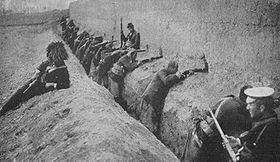 With the outbreak of the First World War in the Vanish province (the administrative and territorial unit in the Ottoman Empire), a massacre of the Armenian population was organized. The defeated on the Caucasian front and the retreating Turkish troops, joined by armed Kurdish gangs and deserters, marauders, under the pretext of "infidelity" of Armenians and their sympathies for the Russians mercilessly massacred Armenians, robbed their property, devastated Armenian settlements. In a number of districts of the Vansky Vilayet, Armenians resorted to self-defense, fought hard against pogrom-mongers. The most significant was the Van self-defense, which lasted about a month.
With the outbreak of the First World War in the Vanish province (the administrative and territorial unit in the Ottoman Empire), a massacre of the Armenian population was organized. The defeated on the Caucasian front and the retreating Turkish troops, joined by armed Kurdish gangs and deserters, marauders, under the pretext of "infidelity" of Armenians and their sympathies for the Russians mercilessly massacred Armenians, robbed their property, devastated Armenian settlements. In a number of districts of the Vansky Vilayet, Armenians resorted to self-defense, fought hard against pogrom-mongers. The most significant was the Van self-defense, which lasted about a month.The Armenian population took measures to repel a threatening attack. To manage self-defense, a single military body was formed - "The Military Body of the Armenian Self-Defense of Van." Services for the provision and distribution of products, medical care, armory workshop (the manufacture of gunpowder and weapons was arranged in it, two guns were cast), as well as the Union of Women, which was mainly engaged in the manufacture of clothing for fighters. In the face of imminent danger, representatives of Armenian political parties rallied together. Against the superior enemy forces (12 thousand soldiers of the regular army, a large number of gangs of formations), the defenders of Wang had no more than 1500 fighters.
Self-defense began on April 7, when Turkish soldiers fired on Armenian women moving on the road from. Shushants to Aygestan; Armenians returned fire, after which a general Turkish attack on Aygestan (Armenian-speaking district of Van) began. The first ten days of the Van self-defense were marked by good luck for the defenders. Despite the fact that Aygestan was subjected to fierce shelling, the enemy could not break through the line of defense of the Armenians. Even the night assault, organized by a German officer who arrived from Erzurum, did not produce results: the Turks, having suffered losses, were discarded. The defenders acted bravely, inspired by the just goals of their struggle. Not a few women and girls fought in the ranks of the defenders. In the second half of April, heavy fighting continued. The enemy, continuously replenishing his troops, attempted to break through the Van line defense line. The shelling of the city continued. In the course of the Van self-defense, the Turks raged in the Van district, cutting out the peaceful Armenian population and setting fire to Armenian villages; about 24 were killed by thugs at the hands of thugs; more than 100 villages were looted and burned. On April 28, the Turks launched a new assault, but Van’s defenders beat it off. After that, the Turks refused to take action, continuing to bombard the Armenian quarters of Van. In early May, advanced units of the Russian army and detachments of Armenian volunteers approached Van.
The Turks were forced to lift the siege and retreat. On May 6, Russian troops and Armenian volunteers entered Van, enthusiastically greeted by defenders and the population. The military self-defense body issued an appeal “To the Armenian people”, in which it welcomed the victory of the just cause of violence and tyranny. Van self-defense is a heroic page in the history of the Armenian national liberation movement
In July, Russian troops repelled an offensive by Turkish forces in the vicinity of Lake Van.
Alashkert operation (June 26 (July 9) - July 21 (August 3))
After the completion of the Sarykamysh operation 1914-1915, part of the 4 of the Caucasian Army Corps (General of Infantry P. I. Oganovsky) moved to the Kop-Bitlis area with the goal of preparing for a general offensive on Erzurum. The Turkish command, seeking to disrupt the command of the Caucasian army, secretly concentrated to the west of Lake Van a strong strike force led by Abdul-Kerim Pasha (89 battalions, 48 squadrons and hundreds). She had the task of squeezing the 4-th Caucasian Army Corps (31 battalion, 70 squadrons and hundreds) in a difficult and deserted area north of Lake Van, destroy it, and then go on the offensive on Kars to cut off communications of Russian troops and force them to withdraw. Parts of the corps under the onslaught of superior enemy forces were forced to move away from the line to the line. By July 8 (21), Turkish troops reached the line Gelian, Jura, Diyadin, creating a threat of a breakthrough to Kars. To disrupt the enemy’s plan, the Russian command created in the Dayar area a strike force of Lieutenant-General N. N. Baratov (24 battalion, 31 hundred), which on July 9 (22) launched a counterattack to the rear of the 3 of the Turkish army. After a day, the main forces of the 4 Caucasian Army Corps went on the offensive. The Turkish troops, fearing a detour, began to retreat and, taking advantage of the insufficiently vigorous actions of the corps units, managed on July 21 (August 3) to go on the defensive at the Bulyuk-Bashi line, Ercis. As a result of the operation, the enemy’s plan to destroy the 4 of the Caucasian Army Corps and to break through to Kars failed. Russian troops retained most of the territory they occupied and provided conditions for the conduct of the Erzurum operation 1915-1916, facilitated the actions of the British troops in Mesopotamia.
In the second half of the year, the fighting spread to the territory of Persia.
In October-December 1915, the commander of the Caucasian army, General Yudenich, carried out a successful Hamadan operation, which prevented Persia from entering the war on the side of Germany. October 30 Russian troops landed in the port of Enzeli (Persia), by the end of December, pro-Turkish armed forces defeated and took control of the territory of Northern Persia, ensuring the left flank of the Caucasian army.
After the Alashkert operation, the Russian troops tried to launch a number of further attacks, but due to the lack of ammunition, all the attacks ended in failure. By the end of 1915, the Russian troops, with a few exceptions, retained the areas they had conquered in the spring and summer of this year, but due to the difficult situation on the Eastern Front and the lack of ammunition, the Russian command had to abandon active operations in the Caucasus in 1915. The front of the Caucasian army was reduced by 300 km. The Turkish command of their goals in the Caucasus, in 1915, was not achieved.
Western Armenian Genocide
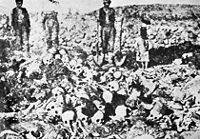 Talking about the hostilities of Turkey in this period, it is impossible not to draw attention to such a monstrous event as the genocide of Western Armenians. Today, the Armenian genocide is also widely discussed in the press and the world community, and the Armenian people keep the memory of the innocent victims of the genocide.
Talking about the hostilities of Turkey in this period, it is impossible not to draw attention to such a monstrous event as the genocide of Western Armenians. Today, the Armenian genocide is also widely discussed in the press and the world community, and the Armenian people keep the memory of the innocent victims of the genocide.During the First World War, the Armenian people survived a terrible tragedy, the Young Turk government in unprecedented scales and with unprecedented cruelty carried out a mass extermination of Armenians. The extermination took place not only in western Armenia, but throughout Turkey. The Young Turks, who were pursuing, as has already been said, aggressive aims, sought to create a "great empire." But the Armenians under Ottoman rule, like a number of other peoples subjected to severe oppression and persecution, sought to get rid of the cruel Turkish domination. In order to prevent such attempts of Armenians and permanently end the Armenian issue, the Young Turks conceived to physically exterminate the Armenian people. The rulers of Turkey decided to take advantage of the outbreak of world war and implement their monstrous program - the program of the Armenian Genocide.
The first extermination of Armenians took place at the end of 1914 and at the beginning of 1915. At first they were organized covertly, secretly. Under the pretext of mobilization into the army and gathering workers for road construction works, the authorities called up adult male Armenians, who were then disarmed and secretly, in separate groups, destroyed. During this period, hundreds of Armenian villages located in areas bordering Russia were ravaged at the same time.
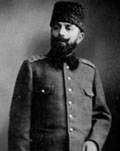 After the destruction of the insidious majority of the Armenian population capable of resisting, the Young Turks from the spring of 1915 began an open and general massacre of peaceful, defenseless residents, carrying out this criminal action under the guise of deportation. In the spring of 1915, an order was issued to evict the Western Armenian population in the deserts of Syria and Mesopotamia. This order of the ruling Turkish clique marked the beginning of a general massacre. Began mass destruction of women, children and the elderly. A part was cut out on the spot, in native villages and cities, the other, which was forcibly deported, en route.
After the destruction of the insidious majority of the Armenian population capable of resisting, the Young Turks from the spring of 1915 began an open and general massacre of peaceful, defenseless residents, carrying out this criminal action under the guise of deportation. In the spring of 1915, an order was issued to evict the Western Armenian population in the deserts of Syria and Mesopotamia. This order of the ruling Turkish clique marked the beginning of a general massacre. Began mass destruction of women, children and the elderly. A part was cut out on the spot, in native villages and cities, the other, which was forcibly deported, en route. The massacre of the Western Armenian population was carried out with monstrous ruthlessness. The Turkish government has instructed its local authorities to be resolute and not spare anyone. Thus, in September, the Minister of Internal Affairs of Turkey, Talaat Bey, telegraphed to the Governor of Aleppo, that the entire Armenian population must be eliminated, not sparing even the young children. The rioters acted in the most barbaric way. Having lost their human appearance, executioners threw children into the rivers, burned women and old people in churches and residential buildings, sold girls. Eyewitnesses with horror and disgust describe the atrocities of murderers. Many representatives of the Western Armenian intelligentsia died tragically. 1915 April 24 was arrested in Constantinople and then brilliantly murdered by eminent writers, poets, writers, and many other cultural and scientific figures. The great Armenian composer Komitas, only accidentally escaped death, could not bear the horrors that he had witnessed, and lost his mind.
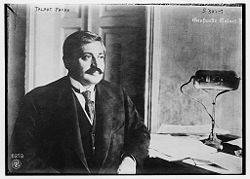 News of the extermination of Armenians leaked to the press of European states, the terrible details of the genocide became known. The world community expressed its wrathful protest against the misanthropic actions of the Turkish rulers, who set a goal to destroy one of the most ancient civilized nations of the world. Maxim Gorky, Valery Bryusov and Yuri Veselovsky in Russia, Anatole France and R. Rolland in France, Fridtjof Nansen in Norway, Karl Liebknecht and Joseph Marquart in Germany, James Bryce in England and many others spoke out in protest against the genocide of the Armenian people. But nothing affected the Turkish rioters, they continued their atrocities. The massacre of Armenians was continued in 1916 year. It took place in all parts of Western Armenia and in all parts of Turkey inhabited by Armenians. Western Armenia has lost its indigenous population.
News of the extermination of Armenians leaked to the press of European states, the terrible details of the genocide became known. The world community expressed its wrathful protest against the misanthropic actions of the Turkish rulers, who set a goal to destroy one of the most ancient civilized nations of the world. Maxim Gorky, Valery Bryusov and Yuri Veselovsky in Russia, Anatole France and R. Rolland in France, Fridtjof Nansen in Norway, Karl Liebknecht and Joseph Marquart in Germany, James Bryce in England and many others spoke out in protest against the genocide of the Armenian people. But nothing affected the Turkish rioters, they continued their atrocities. The massacre of Armenians was continued in 1916 year. It took place in all parts of Western Armenia and in all parts of Turkey inhabited by Armenians. Western Armenia has lost its indigenous population. The main organizers of the genocide of Western Armenians were the Minister of War of the Turkish Government Enver Pasha, Interior Minister Talaat Pasha, one of the major military figures of Turkey, General Jemal Pasha and other young Turks. Some of them were later killed by Armenian patriots. For example, in 1922, the city of Talaat was killed in Berlin, and Jemal in Tiflis.
In the years of the extermination of the Armenians, Kaiser Germany, an ally of Turkey, patronized the Turkish government in every way. She sought to capture the entire Middle East, and the liberation aspirations of Western Armenians hampered the implementation of these plans. In addition, the German imperialists hoped by deportation of the Armenians to get cheap labor for the construction of the Berlin-Baghdad railway. They strongly instigated the Turkish government to organize the forced eviction of Western Armenians. Moreover, German officers and other officials who were in Turkey took part in organizing the massacre and deportation of the Armenian population. Entente powers, who considered the Armenian people to be their ally, in fact did not take any practical steps to save the victims of the Turkish vandals. They confined themselves only to the fact that 24 in May 1915 published a statement, which laid the responsibility of the massacre of Armenians on the Young Turks government. And the United States of America, which has not yet taken part in the war, did not even make such a statement. While the Turkish executioners exterminated the Armenians, the US ruling circles strengthened their trade and economic ties with the Turkish government. When the massacre began, a part of the Western Armenian population resorted to self-defense and tried — where it was possible to protect their lives and honor. The population of Van, Shapin-Garahisar, Sasun, Urfa, Svetii and a number of other regions took up arms.
In 1915-1916 The Turkish government forcibly evicted hundreds of thousands of Armenians to Mesopotamia and Syria. Many fell victim to famine and epidemics. Survivors settled in Syria, Lebanon, Egypt, moved to Europe and America. Armenians living in a foreign land were in very difficult conditions. During the First World War, many Western Armenians managed to avoid massacres with the help of Russian troops and move to the Caucasus. This happened mainly in December 1914 and in the summer of 1915. During 1914 - 1916. About 350 thousand people moved to the Caucasus. They settled mainly in Eastern Armenia, Georgia and the North Caucasus. Refugees, without receiving tangible material assistance, suffered great hardship. In total, according to various estimates, from a million people were destroyed from 1 to 1,5.
Results of the campaign 1914-1915.
Campaign 1914-1915 was controversial for Russia. In 1914, the Turkish troops were unable to dislodge the Russian Caucasian Army from the Transcaucasus and move the fighting to the North Caucasus. Raise against Russia the Muslim peoples of the North Caucasus, Persia and Afghanistan. Were defeated in the Sarikamysh battle. But the Russian army failed to consolidate the success and go into a major offensive. The reasons for this were mainly the lack of reserves (secondary front) and the mistakes of the high command.
In 1915, the Turkish troops could not take advantage of the weakening of the Russian troops (due to the difficult situation of the Russian army on the Eastern Front) and failed to achieve the objectives set — the seizure of the Baku oil-bearing region. In Persia, the Turkish units were also defeated and could not accomplish the task set to drag Persia into the war on their side. The Russian army inflicted several heavy blows on the Turk: defeating them under Van, the Alashkert battle, in Persia (the Hamadan operation). But they also failed to fulfill the plan of capturing Erzerum and completely defeating the Turkish army. In general, the Russian Caucasian Army acted quite successfully. She strengthened her position on the whole front, gained the opportunity for wide maneuvering in the conditions of a mountainous winter, improved the network of front-line communication lines, prepared supplies for the offensive and entrenched in 70 km. from Erzerum. All this made it possible to conduct a victorious Erzerum offensive in 1916.
- http://topwar.ru"rel =" nofollow ">http://topwar.ru
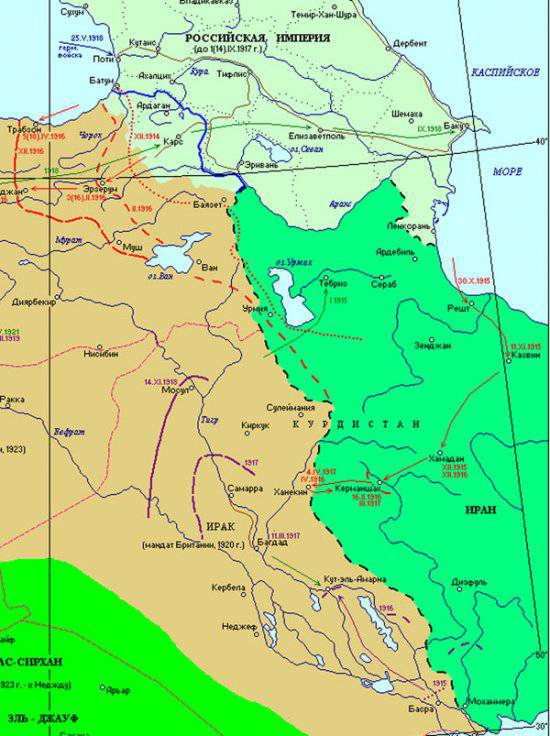
Information